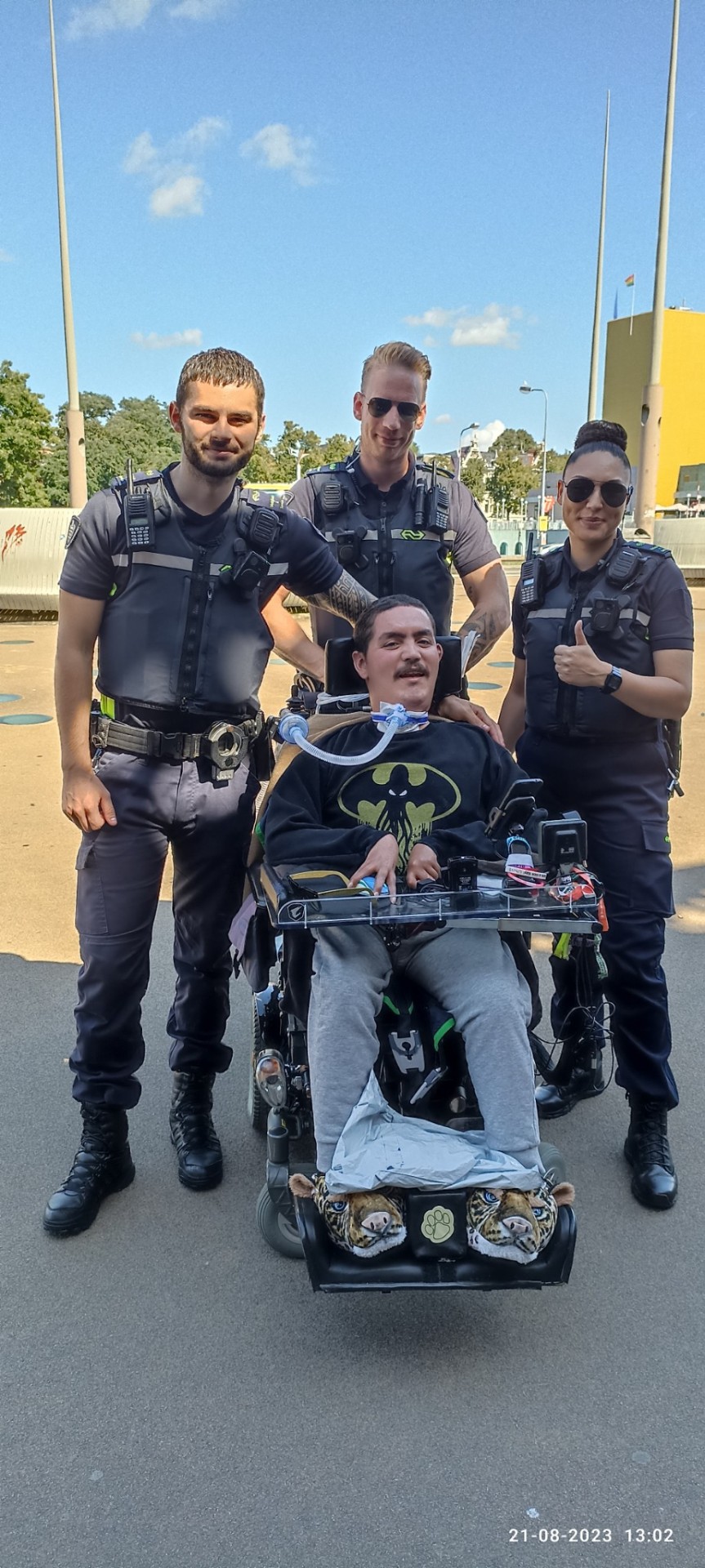#duchenne muscular dystrophy
Video
Gene Team
As an organism evolves, its DNA does too. Tracing the history of how it mutates, moves and duplicates can reveal surprises, like similar genes – paralogues – in distant corners of the genome. Here researchers use optical projection tomography to follow the activity of a gene called Utrn (highlighted in red) in a mouse embryo. Combining patterns of bioluminescence and fluorescence to reconstruct this 3D image reveals Utrn in many of the mouse’s early tissues. Utrn has a paralogue, Dmd, another important developmental gene found to be faulty in Duchenne muscular dystrophy in mice and humans. While these similar genes are expressed differently in health and disease, researchers believe it might be possible for Utrn to 'compensate' for Dmd in some patients. This mouse model will aid the next challenge – testing drugs to coax these related genes into working together.
Read more about this research from the Epigenetic Memory Group at the MRC London Institute of Medical Sciences here
Written by John Ankers
Video from work by Hannah J. Gleneadie and Beatriz Fernandez-Ruiz, and colleagues
Epigenetic Memory Group, MRC London Institute of Medical Sciences (LMS), Imperial College London, Du Cane Road, London, UK
Video originally published with a Creative Commons Attribution 4.0 International (CC BY 4.0)
Published in Communications Biology, March 2023
You can also follow BPoD on Instagram, Twitter and Facebook
#science#biomedicine#genes#muscular dystrophy#duchenne muscular dystrophy#dystrophin#optical tomography#mouse model#bioluminescence#fluorescence#3d imaging
13 notes
·
View notes
Text



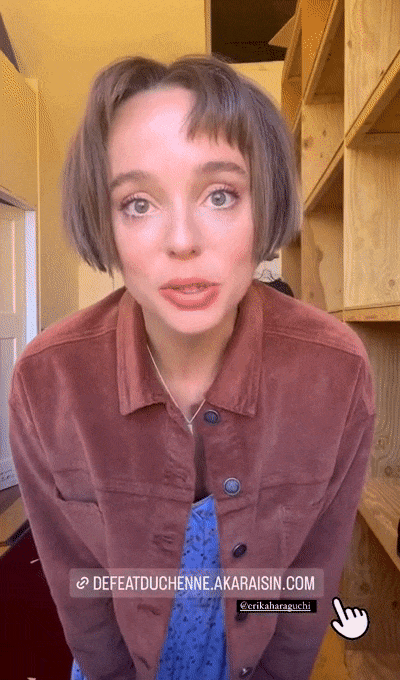

Em Haine
Hi, it's Em...
Defeat Duchenne!
7 notes
·
View notes
Text
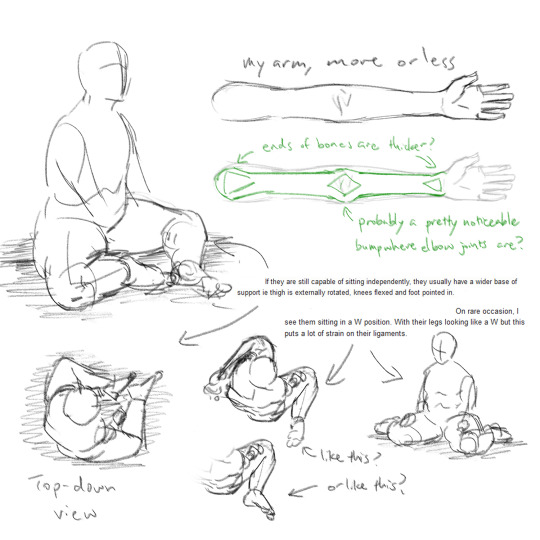

One of the characters in my upcoming work has Duchenne muscular dystrophy and I’ve been in touch with a physical therapist to learn more about it. These are some of my attempts to visualize what they told me about the anatomy and postures of their patients. Hopefully I can get some feedback from them on how to improve my depictions...
16 notes
·
View notes
Text
There are multiple risk factors for the development of osteoporosis. These include but are not limited to advanced age, cigarette smoking, chronic glucocorticoid therapy, low body weight, previous fractures, history of rheumatoid arthritis, and excessive alcohol intake.
Antiepileptic drugs (AEDs) are associated with adverse effects on bone health. The AEDs most commonly associated with altered bone metabolism are those that induce the cytochrome P450 enzyme system. Specifically, the AED phenytoin has a direct inhibitory effect on intestinal calcium absorption and can stimulate osteoclastic bone resorption.
A score of less than -2.5 on DEXA scanning would indicate osteoporosis, a score of -1.0 to -2.5 would indicate osteopenia, and a score greater than -1.0 indicates normal bone density. Additionally, a fragility fracture (fracture from minor trauma such as a fall from a standing height or less) is diagnostic of osteoporosis without any further workup.
Bottom Line: The risk factors for osteoporosis include advanced age, cigarette smoking, chronic glucocorticoid therapy, physical inactivity, poor intake of calcium and vitamin D, body weight less than 127 lb, previous fractures, anticonvulsant use, hyperthyroidism, celiac disease, rheumatoid arthritis, and excessive alcohol intake.
The characteristic need for the child to use his hands to push himself to an upright position when arising from the floor is the Gower sign. It results from weakness in the proximal lower extremity muscles. Physical examination reveals pseudohypertrophy of the calf, lumbar lordosis, a waddling gait, shortening of the Achilles tendons, hypotonia, and hyporeflexia or areflexia. Patients usually use wheelchairs by age 12 or 13. Additional complications include delayed growth, dilated cardiomyopathy, increased fractures, progressive scoliosis with impaired pulmonary function, cognitive impairment, and eventual respiratory insufficiency.
Bottom Line: Elevated laboratory markers in the setting of Duchenne muscular dystrophy include serum creatine kinase, aspartate aminotransferase, and alanine transaminase.
COMBANK Insight: DMD is a progressive, myopathic disorder inherited in an X-linked, recessive fashion and caused by a defective gene on the X chromosome responsible for dystrophin production. Dystrophin normally serves to stabilize and prevent the breakdown of muscle fibers. Loss of dystrophin thus leads to muscle fiber degeneration, resulting in muscle weakness.
Wilson Disease, also known as hepatolenticular degeneration, is an autosomal recessive defect involving an ATPase, Cu2+ -transporting, β-polypeptide. In this disease state, copper is deposited in tissues of the brain, liver, kidneys, and Descemet membrane of the cornea (known as Kayser-Fleischer rings, which are seen in the exhibit). Parkinsonian-like tremor and dementia may be evident when the nervous system is affected. Renal tubular damage occurs in the kidneys and cirrhosis can develop in the liver. Diagnosis can be made with the observation of decreased serum ceruloplasmin. Treatment includes penicillamine, which creates a soluble complex with the metal that can be excreted through the urine.
Bottom Line: A Kayser-Fleischer ring is a golden brown ring observed in the Descemet layer of the cornea as a result of copper deposition and is seen in Wilson disease. Labs reveal low serum ceruloplasmin and treatment with penicillamine can stop the progression of this degenerative disease state.
The types of cancers that metastasize to the bone most commonly are lung, breast, thyroid, renal, and prostate. Multiple myeloma and lymphoma can both form lytic lesions from their origins within the marrow.
A SPEP and UPEP are sensitive for multiple myeloma and should be obtained along with a measurement of the patient's total protein and globulin levels.
Bottom Line: The initial workup of a new lytic lesion generally involves a CT chest/abdomen/pelvis, SPEP/UPEP, bone scan, basic labs, and mammogram or PSA
#osteoporosis#Duchenne muscular dystrophy#muscular dystrophy#Wilsons disease#multiple myeloma#cancer
3 notes
·
View notes
Text
DYNE-251 for the treatment of Duchenne Muscular Dystrophy Received FDA Fast Track Designation
HK-Magicure -- On October 31, Dyne Therapeutics announced that the U.S. FDA has granted Fast Track designation for DYNE-251 for the treatment of Duchenne muscular dystrophy (DMD) mutations amenable to exon 51 skipping. DYNE-251 is being evaluated in the Phase 1/2 DELIVER global clinical trial.

DYNE-251 is Dyne’s product candidate being developed for people living with Duchenne muscular dystrophy (DMD) who are amenable to exon 51 skipping. DYNE-251 consists of a phosphorodiamidate morpholino oligomer (PMO) conjugated to a fragment antibody (Fab) that binds to the transferrin receptor 1 (TfR1) which is highly expressed on muscle. It is designed to enable targeted muscle tissue delivery and promote exon skipping in the nucleus, allowing muscle cells to create a truncated, functional dystrophin protein, with the goal of stopping or reversing disease progression.
In preclinical studies, robust and durable exon skipping and dystrophin expression were observed in the mdx mouse model in skeletal and cardiac muscle as well as reduced muscle damage and increased muscle function. In non-human primates, DYNE-251 demonstrated a favorable safety profile.
DELIVER is a Phase 1/2 global clinical trial evaluating DYNE-251, consisting of a 24-week multiple ascending dose (MAD) randomized placebo-controlled period, a 24-week open-label extension and a 96-week long-term extension. The trial, which is designed to be registrational, is expected to enroll approximately 46 ambulant and non-ambulant males with DMD who are ages 4 to 16 and have mutations amenable to exon 51 skipping therapy. The primary endpoints are safety, tolerability and change from baseline in dystrophin levels as measured by Western blot. Secondary endpoints include measures of muscle function, exon skipping and pharmacokinetics. Dyne anticipates reporting data from the MAD placebo-controlled portion of the DELIVER trial on safety, tolerability and dystrophin in the second half of 2023.

About Duchenne Muscular Dystrophy (DMD)
Duchenne Muscular Dystrophy (DMD) is a rare disease caused by mutations in the gene that encodes for dystrophin, a protein critical for the normal function of muscle cells. These mutations, the majority of which are deletions, result in the lack of dystrophin protein and progressive loss of muscle function.
DMD occurs primarily in males and affects an estimated 12,000 to 15,000 individuals in the U.S. and 25,000 in Europe. Loss of strength and function typically first appears in pre-school age boys and worsens as they age. As the disease progresses, the severity of damage to skeletal and cardiac muscle often results in patients experiencing total loss of ambulation by their early teenage years and includes worsening cardiac and respiratory symptoms and loss of upper body function by the later teens. There is no cure for DMD and currently approved therapies provide limited benefit.
For more articles on medicines, click here: hkmagicure
Hong Kong Magicure Medical Center has long been focusing on the import and export of new drugs, special drugs and rare disease drugs in the field of oncology. Welcome to inquiry: [email protected].
3 notes
·
View notes
Note
Are you in a wheelchair?
I am not, but my brother was in one since he was 9 years old and had a mobility scooter before that. So I have direct experience with how he felt and how he experienced life. I also am very aware of how things are inaccessible because I had to look for accessibility when I was younger to make sure that my brother could do things. Like when going to a convention, we had to find an entirely different entrance and get accommodations in order to just get tickets because the con decided to have the entrance to the ticket booths up 4 flights of stairs from the sidewalk when there was an entrance with a ramp literally 20 ft away.
He actually wrote an autobiography about his experiences before he passed. Working on getting it edited (just for grammar and having actual chapter separation) and published. Hopefully it can help people understand the experience of chronically and terminally ill people as well as wheelchair users.
1 note
·
View note
Text
Mile Crushing 3-24-24

View On WordPress
#auldr#duchenne awareness#Duchenne muscular dystrophy#explore usa#Mile Monsters inc.#Motorcycle Road Trip#motorcycle travel#motovlog#rte-x#setzerpendence
0 notes
Text
FDA Approval of Nonsteroidal Treatment for Duchenne Muscular Dystrophy
Breaking news in the medical world! The U.S. Food and Drug Administration has just approved Duvyzat (givinostat), an oral medication for the treatment of Duchenne Muscular Dystrophy (DMD) in patients six years of age and older. Duvyzat is making history as the first nonsteroidal drug approved to treat patients with all genetic variants of DMD. This is a significant milestone in the treatment of…
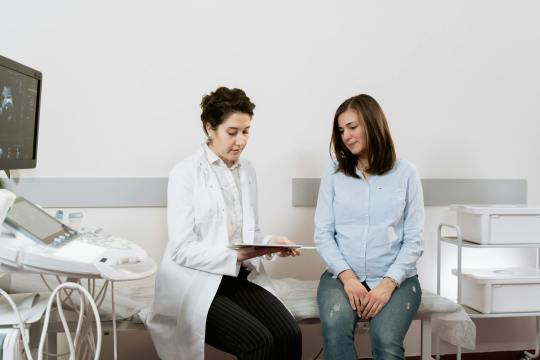
View On WordPress
0 notes
Text
A Comprehensive Guide to Symptoms and Therapie for Duchenne Muscular Dystrophy.

A genetic condition known as Duchenne Muscular Dystrophy (DMD) is characterized by increasing weakening and degradation of the muscles. It usually appears in early childhood and affects guys more than girls. As the illness worsens, major problems with mobility and everyday living are experienced. Even though there isn't a cure for DMD yet, there are a number of treatments and interventions that can help patients live better lives by managing their symptoms and delaying the advancement of their condition.
Duchenne muscular dystrophy symptoms include:
Muscle Weakness:
Usually manifesting in early childhood, muscle weakness is one of the main symptoms of DMD. Activities requiring muscle, such ascending stairs or getting out of a seated position, may be challenging for kids with it.
Motor Milestone Delays:
Children diagnosed with Duchenne Muscular Dystrophy (DMD) may face delays in achieving motor milestones like sitting, crawling, and walking.
Progressive Muscle Degeneration:
As a result of increasing weakness and decreased mobility, muscle degeneration advances over time. This may make it difficult for you to stand, walk, and carry out daily chores on your own.
Contractures:
Muscle weakness and imbalance can result in contractures, or joint stiffness, which limits the range of motion in the afflicted joints.
Cardiopulmonary consequences:
Cardiomyopathy and respiratory insufficiency are examples of cardiopulmonary consequences that can result from DMD's effects on the heart and respiratory muscles.
Treatments for Muscular Dystrophy of Duchenne:
Corticosteroids:
In Medipocketusa, Prednisone and deflazacort are two examples of corticosteroids that are frequently used to help patients with DMD gain more muscle strength and slow the course of their disease.
Physical Therapy:
By emphasizing the preservation of mobility, prevention of contractures, and optimization of overall function, physical therapy is essential in the management of DMD.
Respiratory Support:
People with DMD may need non-invasive ventilation or mechanical ventilation to help them breathe when their respiratory muscles weaken.
Cardiac Management:
Medipocketusa treat cardiomyopathy and other cardiac issues related to DMD, routine cardiac monitoring and care are crucial. As the disease worsens, assistive devices like wheelchairs, walkers, and braces can help people with it preserve their freedom of movement.
Clinical trials for muscular dystrophy (Duchenne):
The advancement of knowledge and the creation of novel treatments for Duchenne muscular dystrophy depend heavily on clinical trials. These clinical trials could look into cutting-edge methods of treating DMD, such as exon skipping, gene therapy, and other focused interventions. By taking part in clinical trials, people with it can receive state-of-the-art treatments and further scientific understanding in the field.
Conclusion:
In Medipocketusa, there is hope for better results due to continuous research and breakthroughs in therapy, despite the considerable problems that Duchenne Muscular Dystrophy presents for affected individuals and their families. People with it and those who care for them can make educated decisions about their care and contribute to the advancement of its research and treatment options by learning about the symptoms of the disease and investigating potential medicines and clinical trials.
0 notes
Text
Precision Medicine Unleashed: The Impact of Gene Therapies on Neuromuscular Health
In the realm of medical breakthroughs, nucleic acid and gene therapies are emerging as promising avenues for revolutionizing the treatment landscape of neuromuscular disorders. From approved therapies to groundbreaking advancements in the pipeline, the trajectory of treating conditions like Duchenne Muscular Dystrophy (DMD) and Spinal Muscular Atrophy (SMA) is witnessing a transformative…
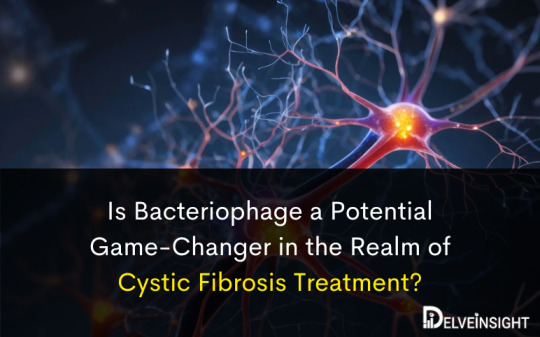
View On WordPress
#CRISPR-Cas9#Duchenne Muscular Dystrophy#Gene Therapies#Gene Therapy#Neuromuscular Disorders#Neuromuscular Disorders Treatment#Nucleic Acids#Nucleic Acids And Gene Therapies In Neuromuscular Disorders#Precision Medicine#Spinal Muscular Atrophy
0 notes
Photo

LARGE Links
Every muscle fibre in your body is packed with muscle cells firmly attached to a surrounding sheet called the basement membrane. This attachment requires a protein on muscle cells called dystroglycan and the help of the enzyme LARGE1. LARGE1 makes another protein, matriglycan, directly onto dystroglycan's outward-pointing end, forming a bridge to the basement membrane. Interfere with dystroglycan and the disease muscular dystrophy occurs. Researchers dig deeper using mice genetically engineered with dystroglycan lacking its outward-pointing stretch. Measuring specific protein levels, they find now LARGE1 can only make stunted forms of matriglycan in muscle cells. Dystroglycan could nonetheless bind the basement membrane but the muscle couldn't work properly. Fluorescent microscopy revealed disrupted neuromuscular junctions (pictured, bottom) – connections between a muscle (green) and its nerves (red) – compared with normal mice (top). This helps unpick dystroglycan’s role in muscle diseases.
Written by Lux Fatimathas
Image from work by Hidehiko Okuma and colleagues
Wellstone Muscular Dystrophy Specialized Research Center, Department of Molecular Physiology and Biophysics and Department of Neurology, Roy J. and Lucille A. Carver College of Medicine, The University of Iowa, Iowa City, IA, USA
Image originally published with a Creative Commons Attribution 4.0 International (CC BY 4.0)
Published in eLife, February 2023
You can also follow BPoD on Instagram, Twitter and Facebook
#science#biomedicine#immunofluorescence#dystroglycan#muscular dystrophy#duchenne muscular dystrophy#neuromuscular junctions#neuroscience#muscles#muscle diseases
12 notes
·
View notes
Text
Dating
A really late bloomer, I didn’t start trying to date until I was 29. This was largely because, as a transgender woman, I didn’t understand my own gender identity until I was around 28 years old. My dating life is further complicated by my diagnosis of Duchenne Muscular Dystrophy, and my use of a powered wheelchair. Due to all of this, one can understand why I was reluctant to date for many years. After I came to a place where I had a much greater understanding of myself and much improved self-esteem, I decided to “put myself out there”. In doing so I learned a great deal about myself and how to present myself on dating apps in a way that best represented who I actually was as a person. What follows is a collection of things I came to understand through this process.
Getting Out There
What exactly does “getting out” entail? I think there are many different ways to define it, and that it is different for everyone. To me it simply means making plans to do things you enjoy in a social space.
For some people with disabilities, “getting out” has become a loaded term. Many typically abled people seem to think that the act of going outside as a disabled person is an act of bravery. The biggest example of this being the way people talk to a disabled person in public. Using phrases such as “Wow! So proud of you for being out and about!” or “Look at you, outside of the house. Great job!” infantilizes us and shows a great lack of understanding. And before you ask, yes people do say things like this to me, almost as often as people ask if they can pray for me. One time I was refilling my accessible van at a gas station and the person at the pump across from me told me they were proud of me for getting gas by myself. Another time, I was waiting in line for a concert and was approached by a person off the street who asked if they could pray for me saying “you never know, you might be cured”. All of this makes me feel like people think that my home life is lacking and that I am miserable and unhappy. This couldn’t be further from the truth. I am quite content with my life as it is now. I have great friends, hobbies I enjoy, places I like to go, and a positive outlook on life. Why don’t people ask if they can pray for random strangers on the street who aren’t in a wheelchair? It is because they assume physically disabled people such as myself need it the most. People often see a wheelchair and seem to assume that you are a miserable person.
Most typically abled people hold some number of misconceptions about what it means to be a disabled person. I’ve found that people are often afraid to ask us if we are able to do things like go to the beach, swim in a pool, or go bowling. These are all things I enjoy and can still do (albeit with some additional assistance). People seem reluctant to ask me if I would like to participate in these things because they seem afraid that they will offend me. However, what ends up hurting me more is being excluded from things I could do because no one thought to ask. This hurts way more than being asked if I want to do something like go to an amusement park and having to tell someone no (because I don’t think I would enjoy it since actually getting on the rides is too much for me personally). Of course I also need to know how people can best assist me, but that’s something I’ll get back to later.
When using online dating apps, having pictures of myself doing things I enjoy outside of my own home (or even things at home with friends such as Dungeons and Dragons) goes a long way towards dispelling any misconceptions people may have about my disability. It shows that I advocate for myself, that I communicate with others, and that getting out isn’t impossible for someone in a wheelchair. On top of this, pictures of myself enjoying life make me much more attractive to other people. Don’t take 6 selfies in your bathroom and assume anyone is going to believe it when you say “confident, outspoken, and funny”. You can write whatever you want on your dating profile. Having pictures that actually put meaning behind my words goes a long way in establishing initial contact with someone through dating apps.
Being Upfront About What I Want
Everyone communicates differently, and figuring out what works best for you is incredibly valuable. I am somewhat neurodivergent, which also affects how I communicate best with other people. Since relationships are built on communication, understanding I have always been bad at interpreting the signals behind someone’s actions has helped me tremendously in my relationships. Most people try to show their intentions through a variety of gestures, words, and actions to get the other person to interpret and correctly identify what they want. It seems like oftentimes these actions avoid directly telling someone what you want and rely on them deciphering the meaning behind your actions. To me this comes across as an elaborate game with rules that are difficult to understand. Outside of dating, the way I say things has often been misinterpreted and, as a result, I always end up overthinking what I should do or say. This always made dating seem incredibly tiresome to me, because I was constantly evaluating the proper choices. After I grew more confident in myself, I chose to avoid the dating “game” entirely by being upfront about what my expectations are and what I want out of a relationship. I make it clear the first time I invite someone out, that they know I am inviting them out with the intent to see if a relationship can develop. Even if my first encounter with someone is an hour long meeting at a coffee shop, I make sure the other person knows it is a “date”. It feels like people unfortunately tend to think of visibly disabled people as non-romantic and non-sexual beings who aren’t capable of being in a typical relationship. Setting expectations early seems to have kept my relationships from falling into a pattern where I end up investing too much energy in a relationship that was never going to go anywhere.
Meeting in Person, Sooner, Rather than Later
When I first started venturing into dating I would spend weeks trying to get to know anyone I matched with on an app before actually inviting them on a date. This may work for some people, but I found that this approach would lead to me investing way too much in people who often didn’t invest the same amount of interest back. For a variety of reasons, people on dating apps ended up dropping contact with me (ghosting) after weeks of constant communication when I made it clear I wanted to meet them in person for a quick date. Some people online lie about who they are, some people don’t have the intent of moving beyond internet communication, some people might get bored of you by the time you actually invite them on a date, some people are anxious and may just disappear, and a small number of people may be scared off by the idea of actually pursuing a relationship with a disabled person. The point is, this all led to me feeling like I was wasting a ton of my time. I decided to skip all of this and just chat with people I matched with long enough to see if there was interest, and then ask them to go out for a quick coffee/boba tea/smoothie date. This led to more dates (and often more second and third dates), got the awkwardness about the wheelchair out of the way quickly, and helped me move on quickly when something wasn’t going to work out.
0 notes
Text
Oğlum DMD’li olabilir mi?
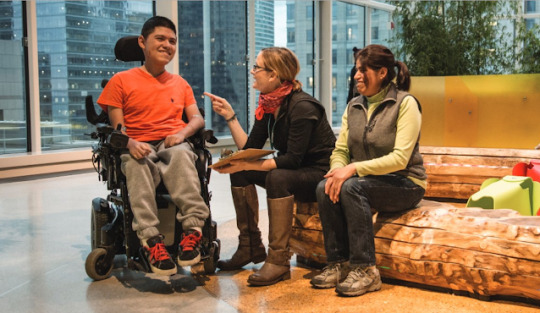
DMD belirtileri
Yaşıtlarından daha geç yürüme.
Merdiven çıkma ve yerden kalkmada güçlük.
Yerden kalkarken zorlanma ve dizleri tutarak GOWERS manevrası adı verilen hareketi yaparak ayağa kalkma.
Konuşma gelişiminde gecikmeler.
Kolayca düşme ve parmak ucunda yürümeye eğilim.
Şişkin baldır kasları.
Kas proteini kreatin kinaz değerinin (CK) kan testinde yüksek çıkması. >> CK hangi hastalıklarda yükselir?
Karaciğer enzimleri AST ve ALT’nin kan testinde yüksek seviyelerde olması.
Düztabanlık veya ayak deformiteleri. >> DMD ayak sağlığı
Sırt ve omurga eğriliği (skolyoz). >> Skolyoz nedir?
Solunum güçlüğü veya nefes almada zorluklar.
Kalp kası zayıflığı ve kardiyomiyopati belirtileri. >> DMD’de kalp sağlığı
Güçsüzlük nedeniyle zorlanarak oturma ve kalkma.
Denge kaybı ve düşük denge becerileri.
El kaslarında güçsüzlük ve beceri kaybı.
Bilek ve el bileği hareketlerinde zorlanma.
Kalça kaslarında güçsüzlük ve sık sık düşme eğilimi.
Skapular (omuz bıçakları) kaslarında zayıflık ve omuzları düşük tutma.
Fiziksel aktivite ve egzersizle hızla yorulma.
>> DMD tanısında kullanılan testler
Unutmayın ki bu belirtiler her hastada farklı şekillerde görülebilir ve hastalığın ilerleyişi bireyden bireye değişebilir. Eğer bu belirtilerden herhangi birini fark ediyorsanız, bir çocuk nöroloji uzmanına başvurmanız önemlidir. Uzman bir doktor tarafından doğru teşhis ve uygun tedavi planı belirlenmelidir.
Oğluma DMD Teşhisi Konuldu, Ne Yapmalıyım?
Oğlunuzun genetik test ve nörolojik muayene sonucunda Duchenne Musküler Distrofi (DMD) teşhisi konulduysa, bu süreç sizin için psikolojik açıdan zorlayıcı olabilir. Ancak bilmeniz gereken şey, DMD alanındaki çalışmaların son yıllarda hızla ilerlediği ve başarılı ilaç denemelerinin yapıldığıdır. Bu süreci, DMD hastası olan diğer ailelerle kurduğunuz güçlü bağ sayesinde daha kolay atlatabilirsiniz.
DMD Dayanışma Platformu ve DMD Türkiye Derneği’ne üye olmanız, sosyal medya hesaplarını takip etmeniz ve WhatsApp aile gruplarına katılmanız doğru yönlendirmeler almanızı sağlayacaktır. Ayrıca >> DMD hasta kayıt formunu doldurarak güncel çalışmalardan haberdar olabilirsiniz.
DMD Dayanışma Platformu sosyal medya hesapları
twitter.com/dmddayanisma
instagram.com/dmddayanisma
DMD Türkiye Derneği sosyal medya hesapları
twitter.com/dmdturkiye
instagram.com/dmdturkiye
facebook.com/dmdturkiye
DMD Aile gruplarına katılmak için DMD Türkiye Deneği başkanı Sadullah Erol bey ile +90 533 927 90 45 numaralı hat üzerinden iletişime geçebilirsiniz.
Yaşadığınız bölgede veya ülkenizdeki uzman çocuk nöroloji birimine başvurarak da doğru yönlendirmeler alabilirsiniz. T��rkiye’de kas hastalıkları alanında uzmanlaşmış merkezlerin bilgilerine >> Kas Hastalıkları Merkezleri sayfasından ulaşabilirsiniz.
Bu süreçte ilk adımlarınızı doğru şekilde atmaya özen göstermeniz önemlidir. DMD Dayanışma Platformu’nun gönüllü psikologlarından veya tecrübeli ailelerden destek alabilirsiniz. >> Psikolojik Destek Birimi Bu hastalığa doğru bir başlangıç yapabilirsiniz. Ayrıca, >> DMD Aile Rehberi (Doğru Bakım ve Tedavi Kılavuzu) ‘nin Türkçe çevirisini okuyarak DMD hakkında detaylı bilgiler edinebilirsiniz.
DMD kas hastalarının yaşam boyu fizik tedavi ve iyileştirme hizmetlerine ihtiyaçları olduğunu unutmayın. Uzman bir çocuk nöroloji ve fizik tedavi doktoruna danışarak çocuğunuzun fizik tedavi almaya ne zaman başlaması gerektiğini öğrenebilirsiniz. >> Fizik Tedavi ve Rehabilitasyon sayfasından daha fazla bilgi edinebilirsiniz.
Beslenme diyeti, DMD hastalığının seyrini etkileyen önemli bir faktördür. Özellikle kortizon kullanımına başladıktan sonra kilo kontrolüne dikkat etmek önemlidir. >> DMD hastalarında kilo alımına dikkat Kalsiyum, protein, D vitamini, omega yağ asitleri, anti-inflamatuvar bileşenler ve antioksidan içerikli gıdaların bulunduğu doğal bir beslenme diyeti çocuğunuza sağlık açısından önemlidir. >> “Beslenme Önerileri” sayfasından faydalanabilirsiniz.
Çocuğunuz davranış ve öğrenme problemleri yaşıyorsa, psiko-sosyal destek almasını sağlamak önemlidir. Siz de anne ve baba olarak psikolojik destek alarak çocuğunuza daha faydalı olabilirsiniz. >> “Psikolojik Destek” sayfasından faydalı bilgiler edinebilirsiniz.
Eğer çocuğunuz yaşı ilerlemiş bir DMD kas hastasıysa ve solunuma dair problemler yaşamaya başladıysa, akciğer enfeksiyonlarının önüne geçebilmek için non-invaziv ventilasyon cihazlarını kullanmayı düşünebilirsiniz. Bu konuda doktorların tavsiyelerini alabilirsiniz. “İlerleyen Yaşlarda Dikkat Edilecekler” sayfasından daha fazla bilgi alabilirsiniz.
DMD hastalığını yavaşlatmaya yönelik gelişmekte olan ilaç ve tedavi çalışmalarını takip etmek isterseniz dmd.arti.net sitemizin menü kısmından DMD HAKKINDA >> İlaç Çalışmaları sayfasını ziyaret edebilirsiniz.
Unutmayın ki binlerce çocuğu ve ailesini etkileyen DMD hastalığı hakkında bilgi edinmek ve doğru yönlendirmeler almak önemlidir.
Bizler birlikte çok güçlü bir aileyiz!
DMD ile mücadelede yalnız değilsiniz, DMD Türkiye Derneği ve DMD Dayanışma Platformu olarak her zaman yanınızdayız!
Bize ne zaman ihtiyaç duyarsanız [email protected] , [email protected] mail adreslerinden yada +90 533 927 90 45 (DMD Türkiye Derneği Başkanı Sn. Sadullah Erol) üzerinden ulaşabilirsiniz.
#DMD#DMD Dayanışma Platformu#DMD Aileleri#DMD'nin Farkında Ol#duchenne muscular dystrophy#Oğlum DMDli mi?
0 notes
Text
Duchenne muscular dystrophy gene therapy
Duchenne muscular dystrophy gene therapy approved by USFDA.
Yesterday it was a golden day in the medical profession and Bio pharmaceutical development Duchenne muscular dystrophy gene therapy was approved by USFDA. It has provided hope for life to billions of DMD affected children.
Untill 22-06-2023 there was no treatment available for Duchenne muscular dystrophy (DMD). on 22-Jun-2023 an…
View On WordPress
0 notes
